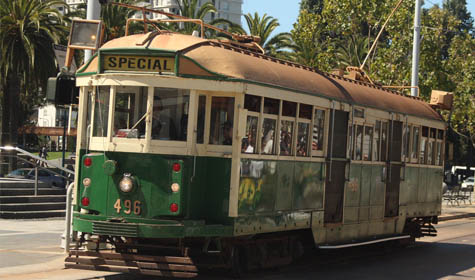El Paso started construction last month on a $97 million streetcar program that local officials apparently never had any intention of funding.
If the project is completed by its scheduled date in late 2018, patrons will be able to ride back and forth along a two-mile corridor from the border crossing at Stanton Street downtown to the University of Texas at El Paso, at speeds slightly faster than walking.
In 2012, the El Paso City Council paid $4.7 million for streetcar studies after a local mover and shaker dangled the possibility of state funding.
The funding took two years to materialize. In 2014, Ted Houghton, a local businessman and political figure who also chairs the Texas Transportation Commission, persuaded the commission to approve $97 million for the project out of a $2.2 billion debt issue.
While local officials welcomed the money, State Rep. Joe Pickett (D-El Paso), chairman of the House Transportation Committee, denounced the deal as a “pet project” that sucked up funds that could have gone to more practical needs such as highway improvements.
“Regardless of the source, it is tax dollars, your tax dollars,” Pickett wrote.
Randall O’Toole, a transit expert with the Cato Institute, also blasted the project on local radio.
“The whole purpose of streetcars and light rail is to separate taxpayers from their money,” O’Toole said.
Streetcars serve fewer people than buses and cost twice as much to maintain, even before considering the cost of building a rail network, O’Toole said. They’re also involved in triple the number of fatalities as buses.
A 2013 study of seven big-city streetcar programs found that streetcars move about half as fast as buses.
Those speeds ranged from 4.43 miles per hour in Little Rock (the pace of a brisk walk) at the low end up to 7.73 miles per hour in Tacoma (equivalent to a jogger’s pace).
A reporter for the Oregonian once beat Portland’s streetcar across town simply by walking.
The El Paso streetcar route will run north on Stanton Street, loop around UTEP, then run south down Oregon Street a block over, making 27 stops along the way.
Before streetcars became a quaint — if expensive — bit of nostalgia, El Paso had 63 miles of track and 100 vehicles.
The city will spend $18.8 million restoring the six old-timey cars to be used on the route.
This article was reprinted with permission from watchdog.org and the Franklin Center. The original author was Jon Cassidy who can be contacted at [email protected] or @jpcassidy000. Original article appears at: http://watchdog.org/255590/100-million-hipsters-el-paso-gets-old-timey-streetcars/?roi=echo3-32256386495-33304953-7fd9c11dfd27d26b2d9a01a4b44d461f

